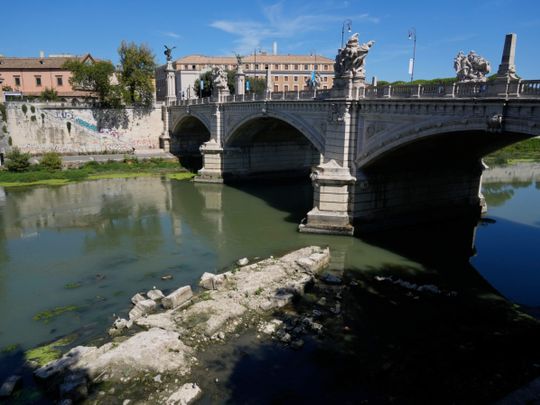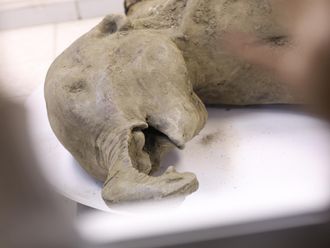
ROME: Europe’s record-breaking heat wave will be just an average summer in less than 15 years “- even if countries meet their climate goals “- with regular droughts and fires set to become the norm.
By the end of the century, a typical summer will be over 4 degrees Celsius hotter than pre-industrial levels, more than twice the 1.5 degree target set by the Paris Agreement, according to a report by the Met Office Hadley Centre.
The Climate Crisis Advisory Group, an international coalition of scientists that commissioned the report, called for a rapid reduction in planet-warming emissions, measures to remove carbon dioxide from the atmosphere and a plan to re-freeze the Arctic Ocean, which has suffered some of the most extreme warming to date.
“The situation is still set to get worse, with weather in Europe predicted to become even more extreme than seen this summer,” David King, chair of CCAG, said in a statement. “This data doesn’t fully account for the instability of the Arctic, which we now know is a global tipping point that could have major cascading consequences for the entire planet.”
The future of the Arctic is one of the key uncertainties for scientists trying to make climate change forecasts.
The report comes amid fears of a global backslide in climate initiatives as governments grapple with record energy prices following war in Ukraine.
The EU’s longer-term emissions-reduction plans remain broadly on track, with the bloc aiming to slash greenhouse gases ejected into the atmosphere by 55% by the end of the decade. Globally, countries are set to meet in Egypt in November to discuss how to meet stiffer climate goals.
Risks of extreme weather
The concern is that it won’t be enough to prevent more extreme warming scenarios.
“The risks of extreme weather, including fires, drought and flash floods, will keep increasing rapidly unless emissions of greenhouse gases are reduced substantially,” said Peter Stott, a scientist from the Met Office.
Meanwhile, Italy’s worst drought in 70 years has exposed the piers of an ancient bridge over the Tiber River once used by Roman emperors but which fell into disrepair by the third century.
Two piers of Nero’s Bridge have been visible much of the summer near the Vittorio Emanuele bridge that traverses the river near the Vatican, a pile of moss-covered rocks where seagulls now sun themselves.
The bridge was built in the first century for Emperor Nero to reach his gardens near the Janiculum Hill near what is present-day St. Peter’s Square, said historian Anthony Majanlahti. The bridge was already falling apart by the third century, traffic was diverted to the nearby Sant’Angelo Bridge, which funneled pilgrims past the Castel Sant’Angelo to the Vatican.
Nero’s Bridge originally is believed to have had four piers, but Majanlahti says two were dismantled in the 19th century to allow for a better flow of river traffic.
“Because the water level of the river is so low now due to widespread drought across Italy, we’re able to see a lot more of the piers of the bridge that we usually could,’’ Majanlahti said.
In normal water level years, one of the bridge’s piers can often been seen in the driest season, but this year two are visible.
The Italian government has declared a state of emergency in several regions because of the prolonged drought and accompanying heat wave. The drought has also exposed a World War II tank in Italy’s largest river, the Po, as well as 20th century ordinance in lakes.






